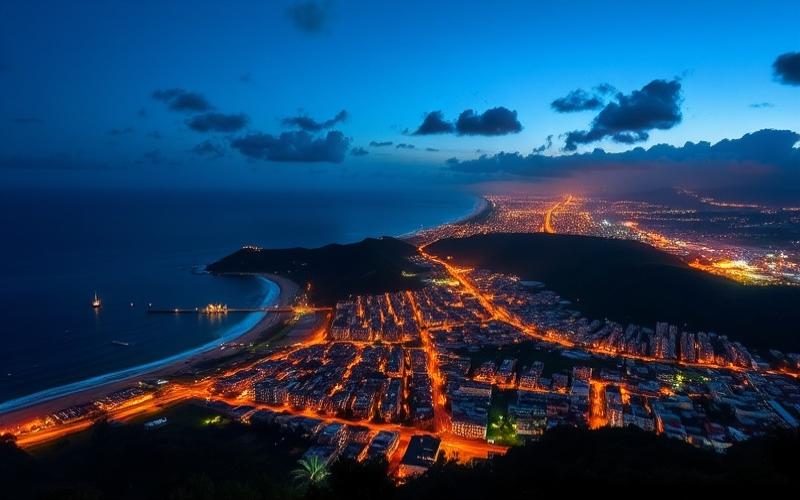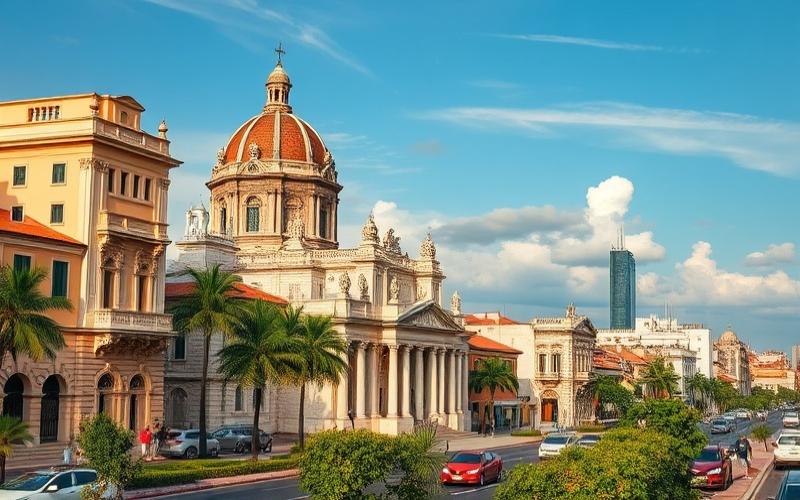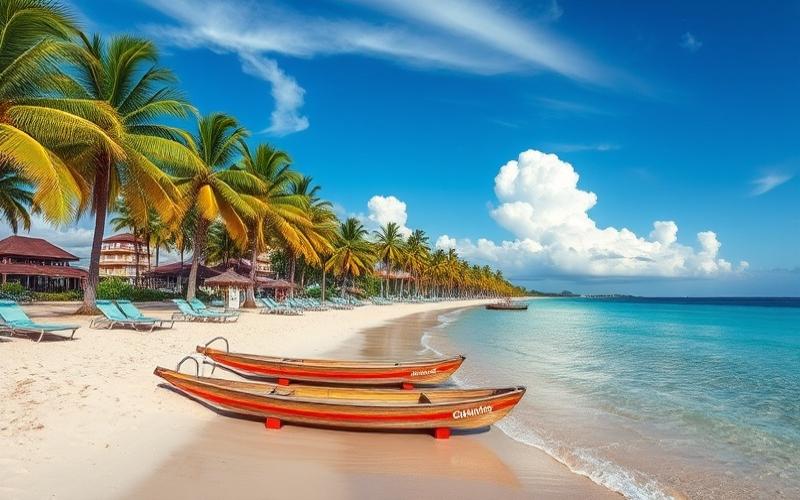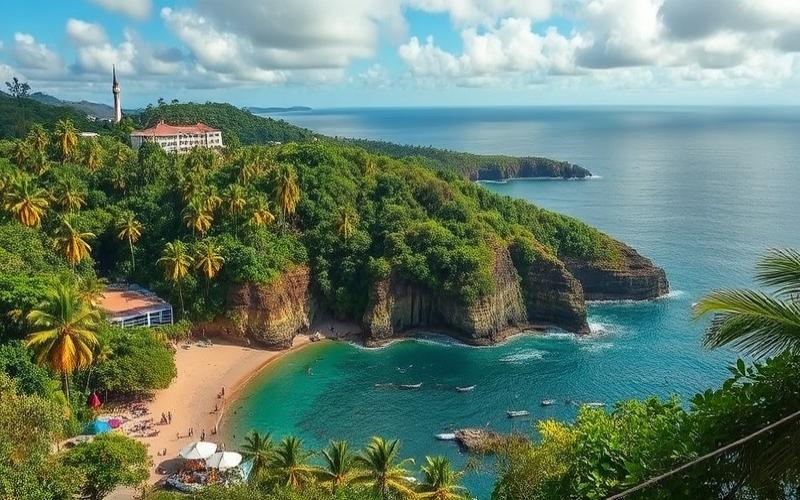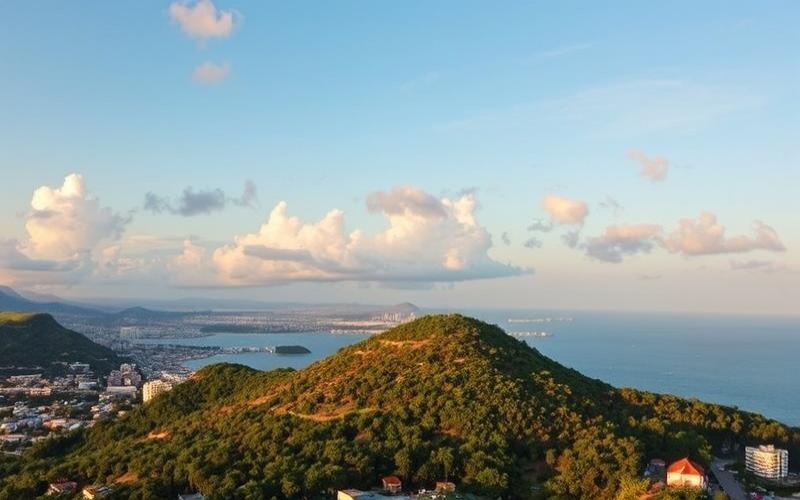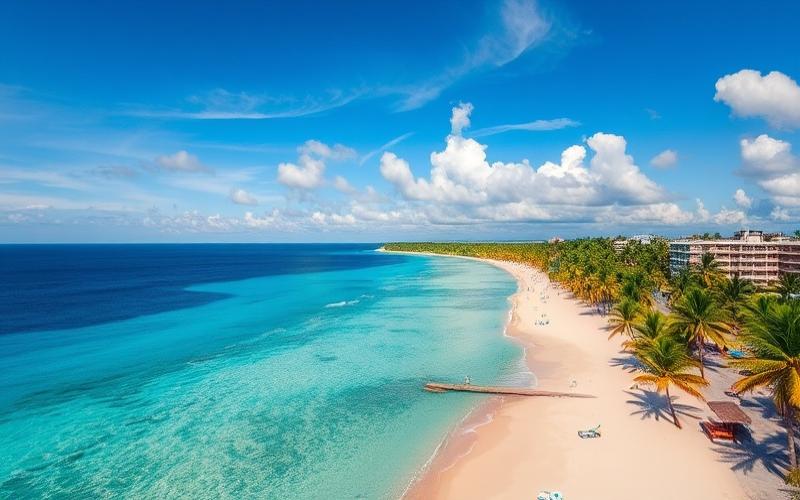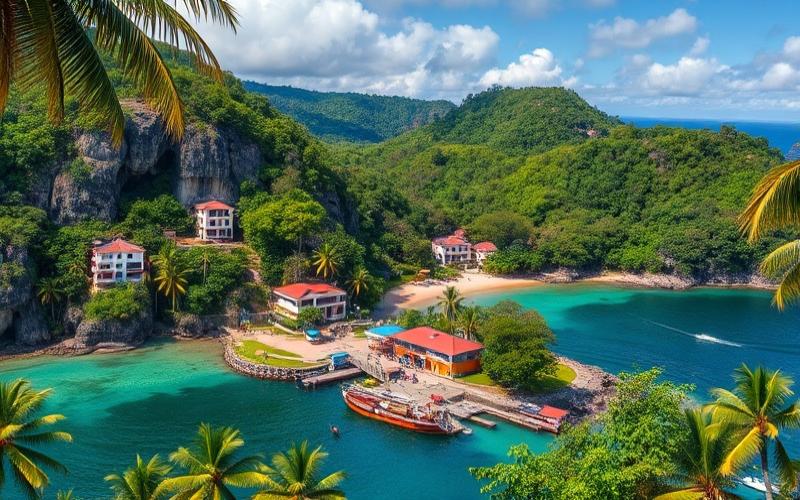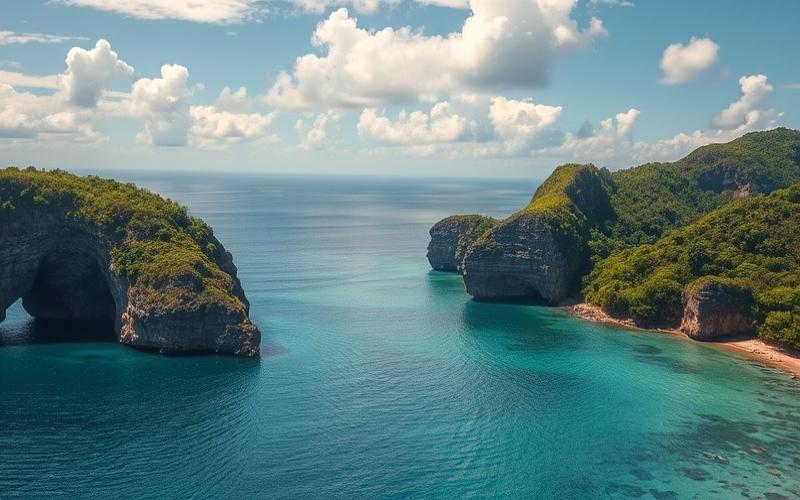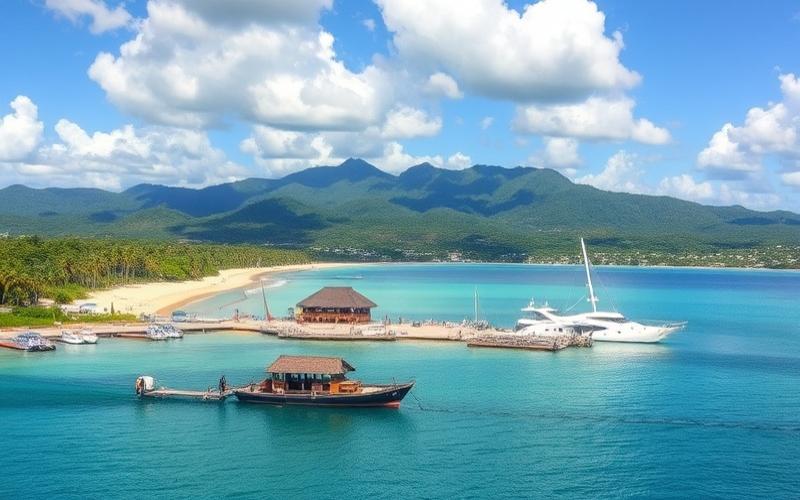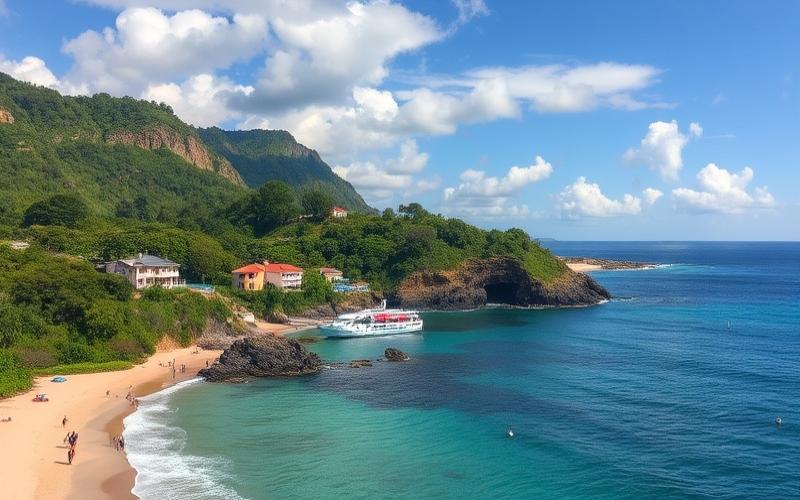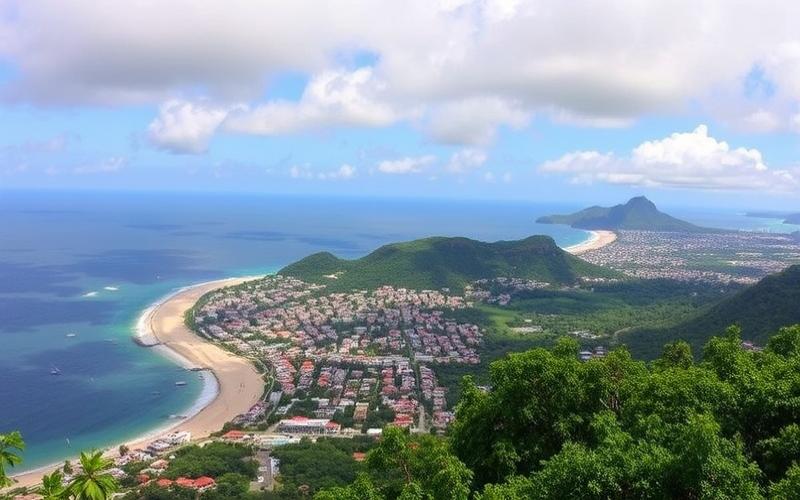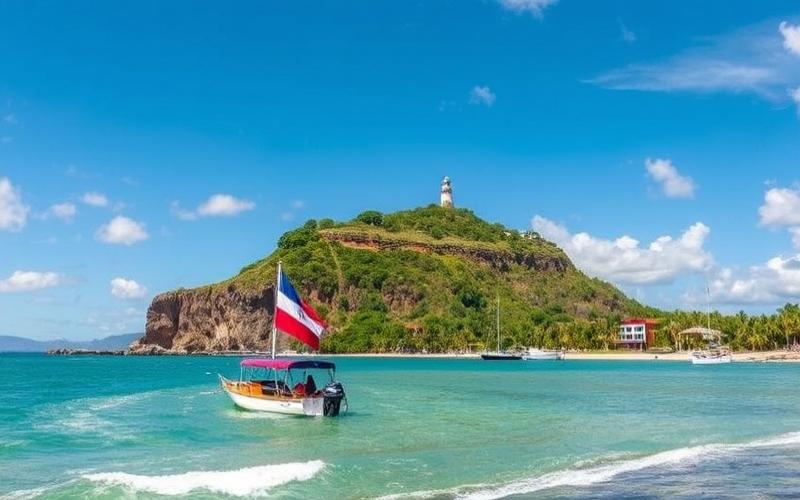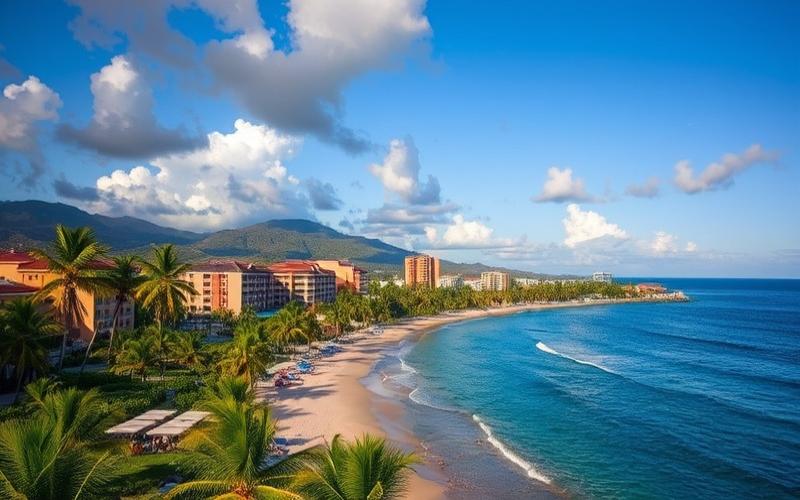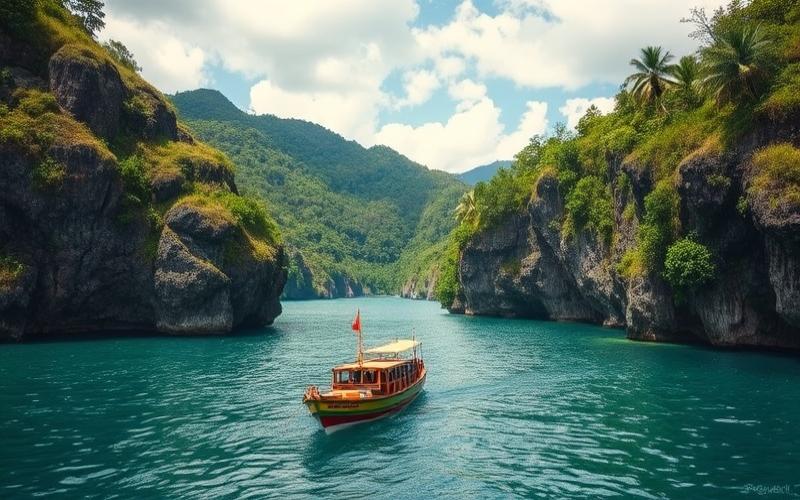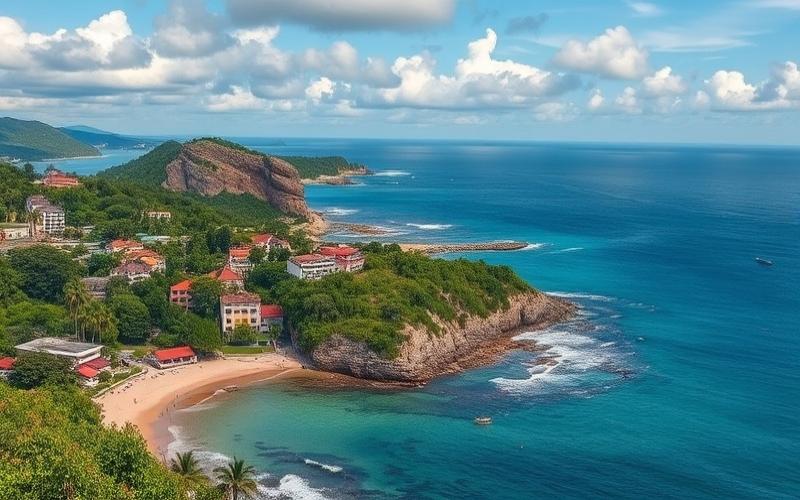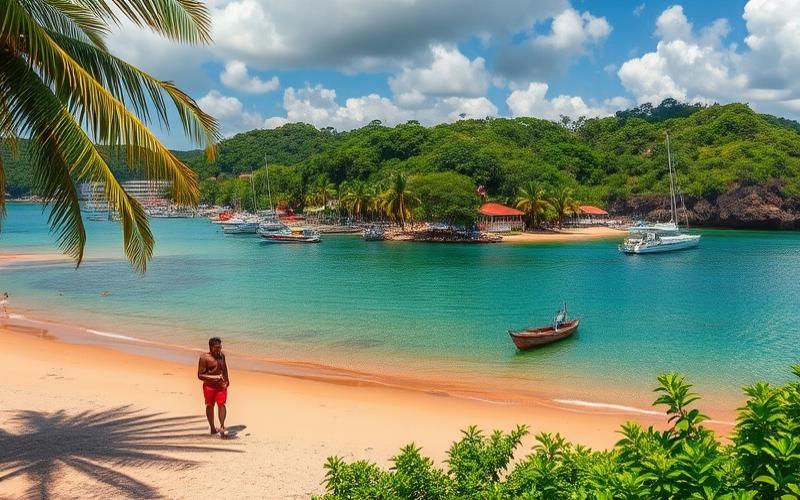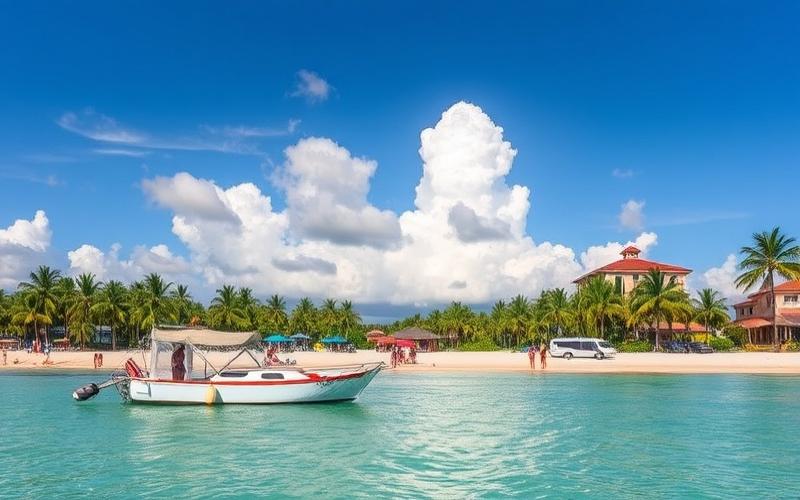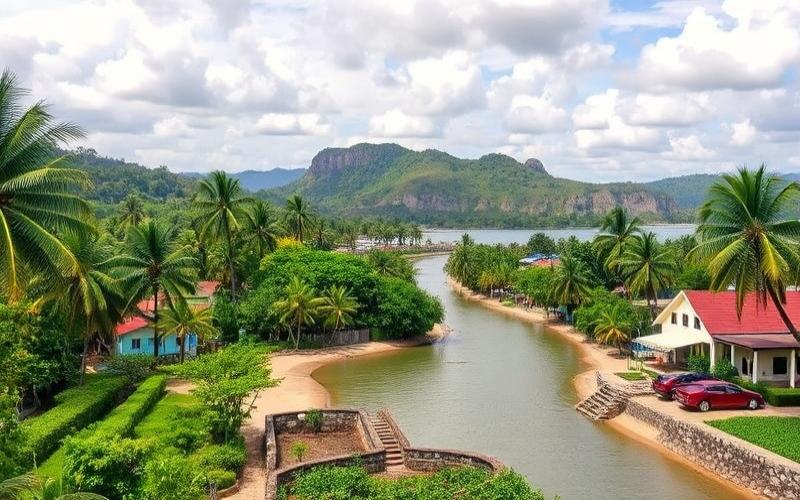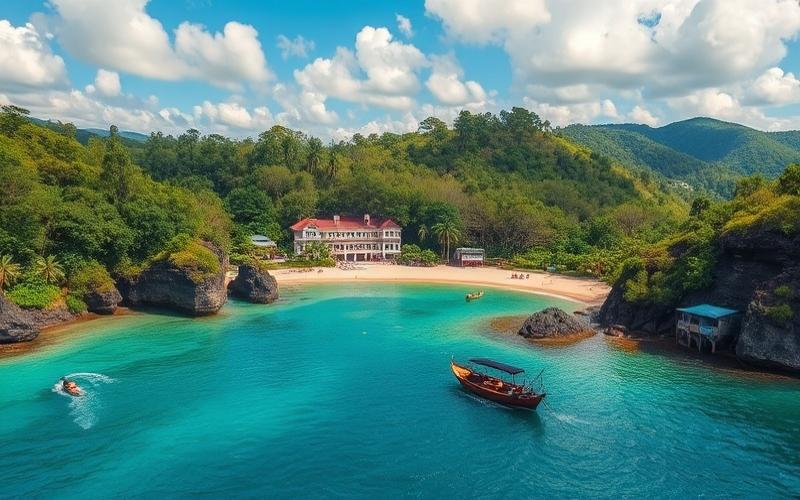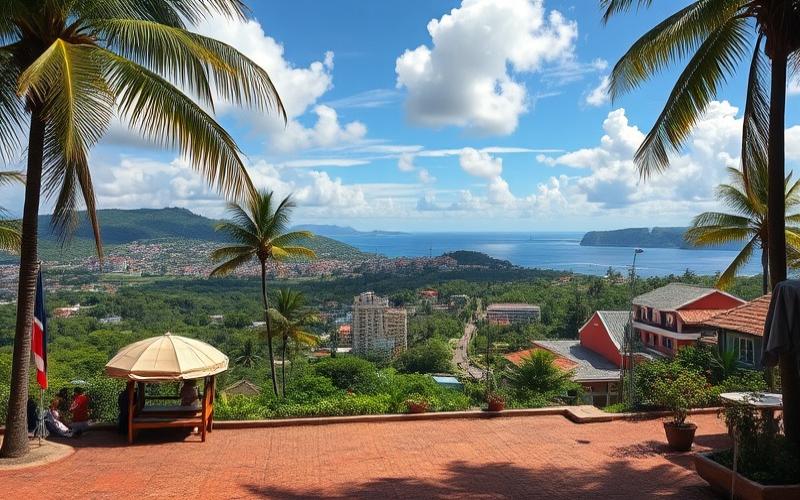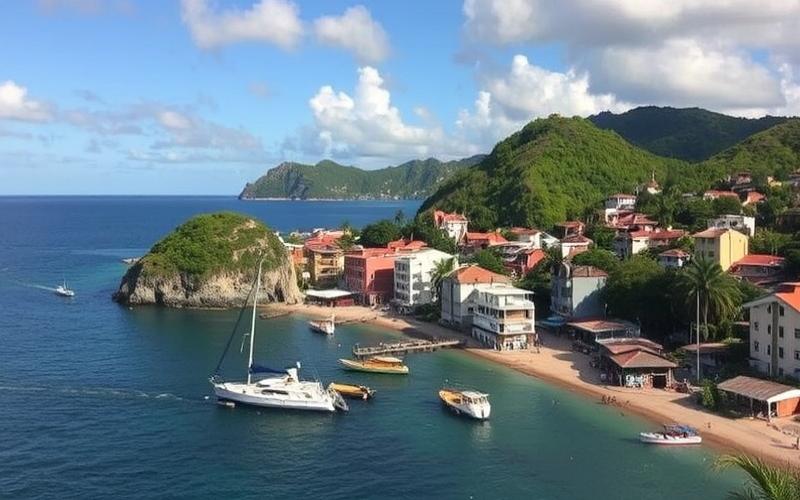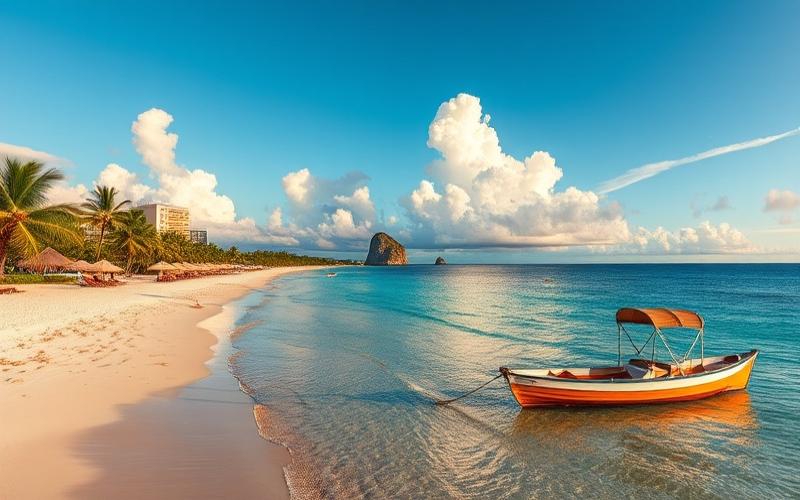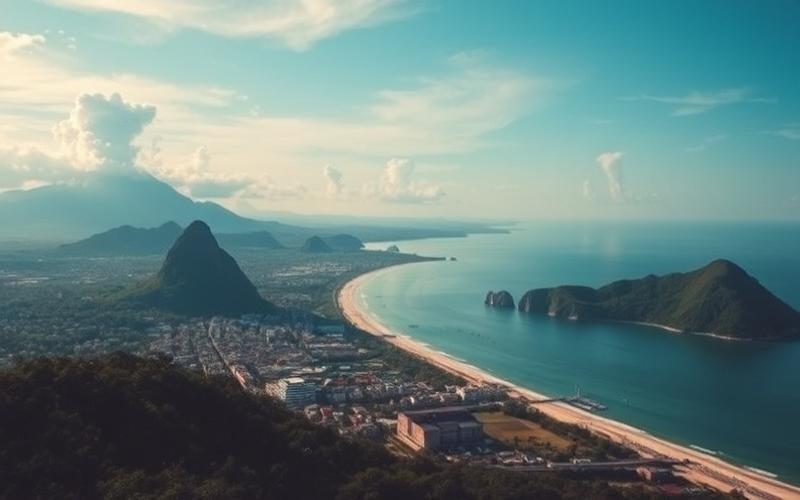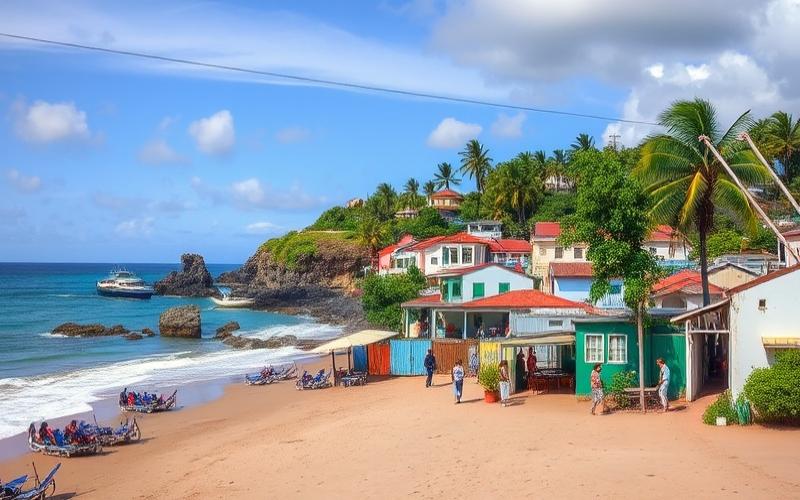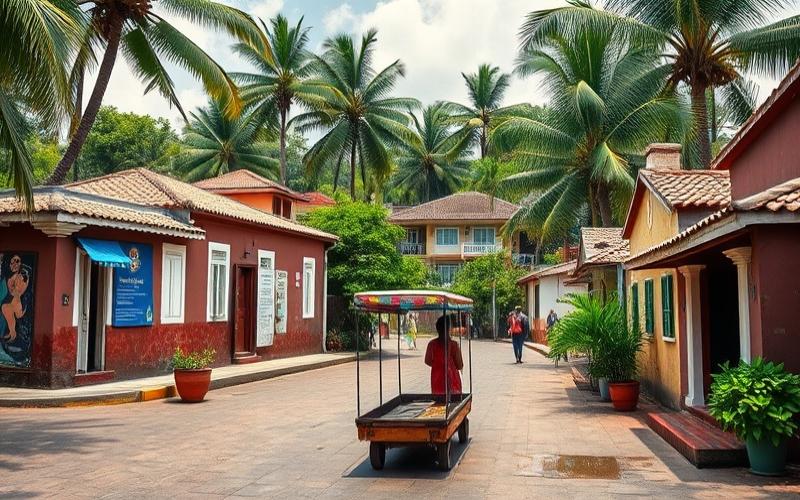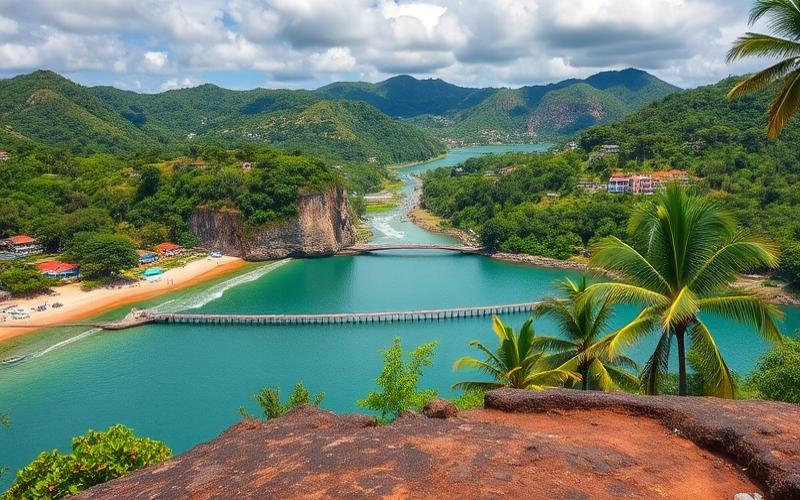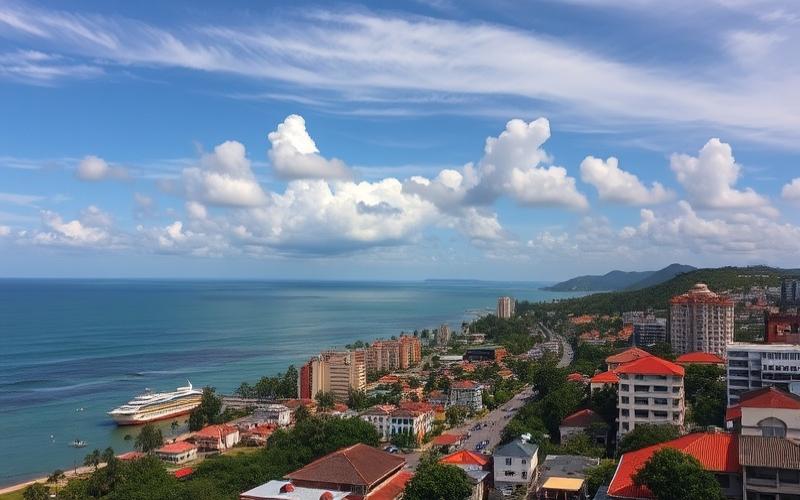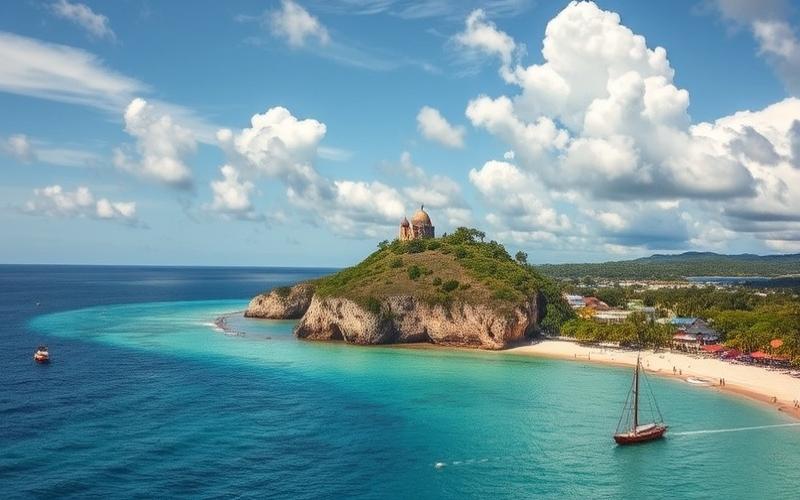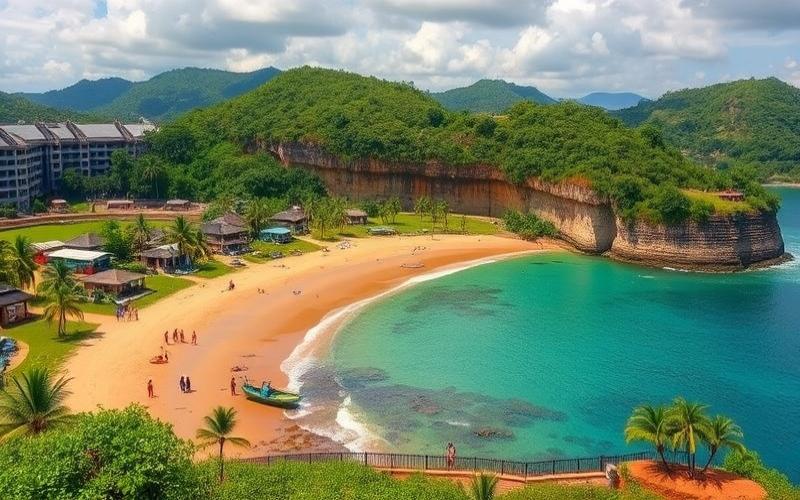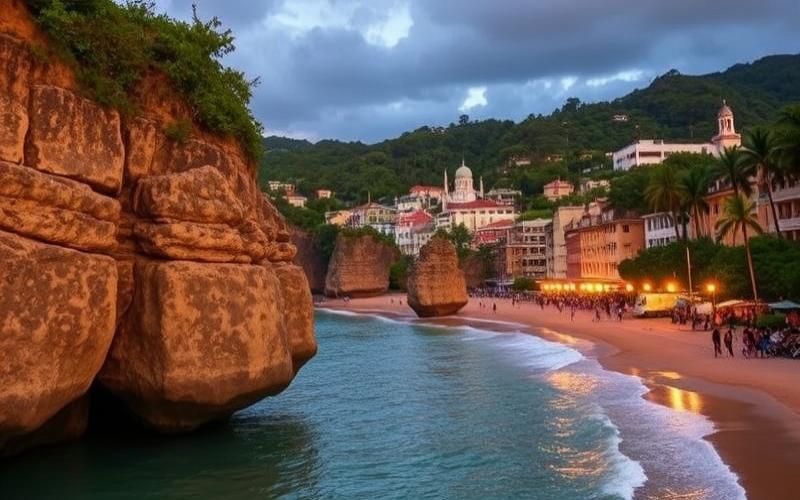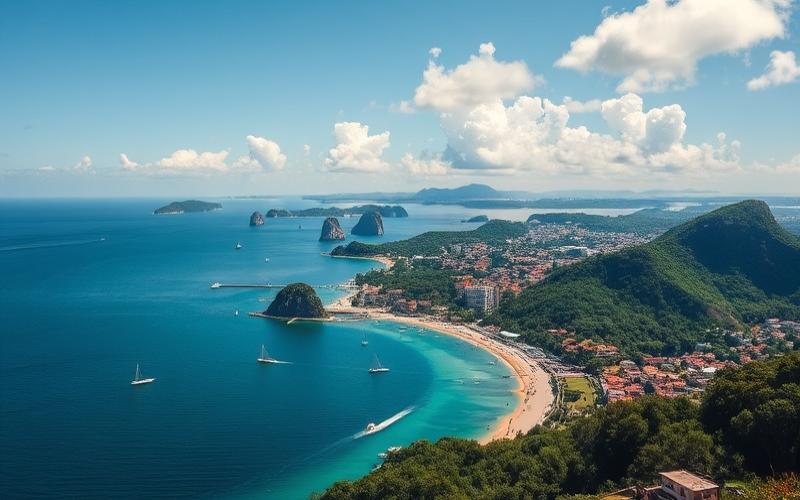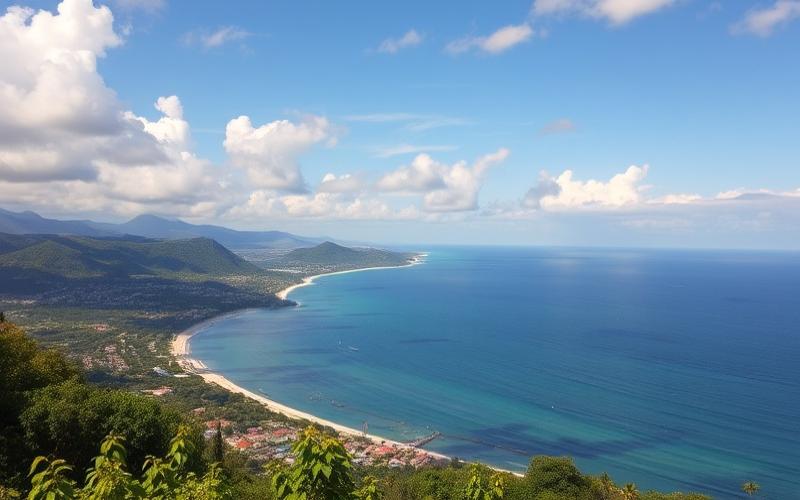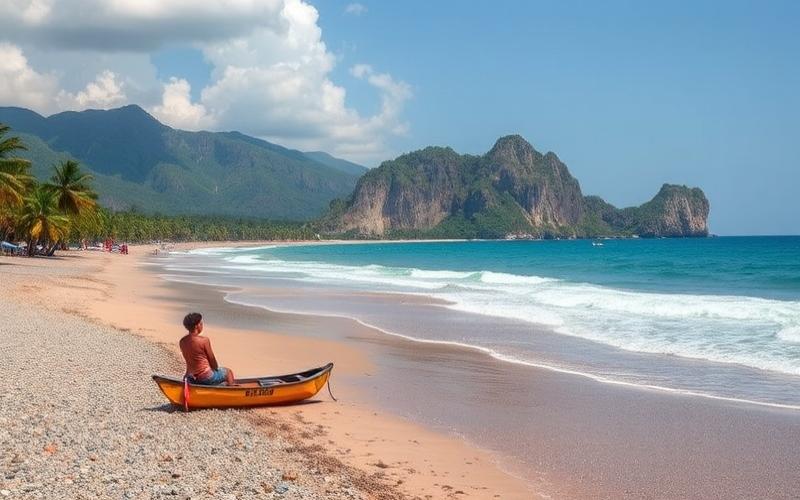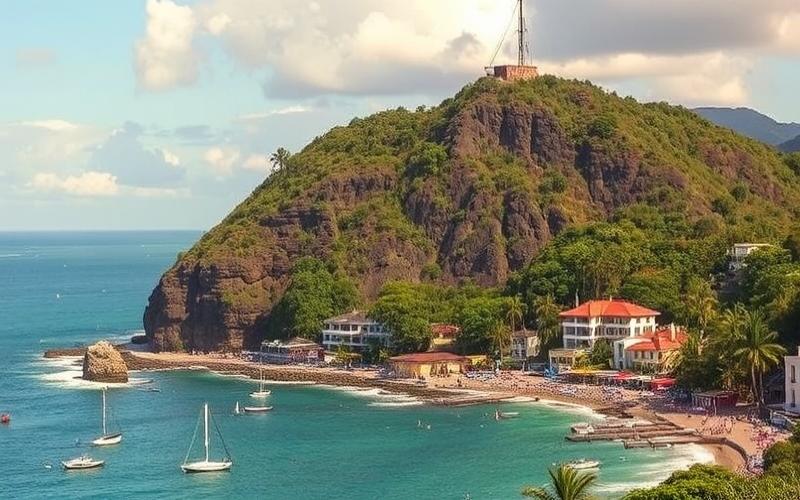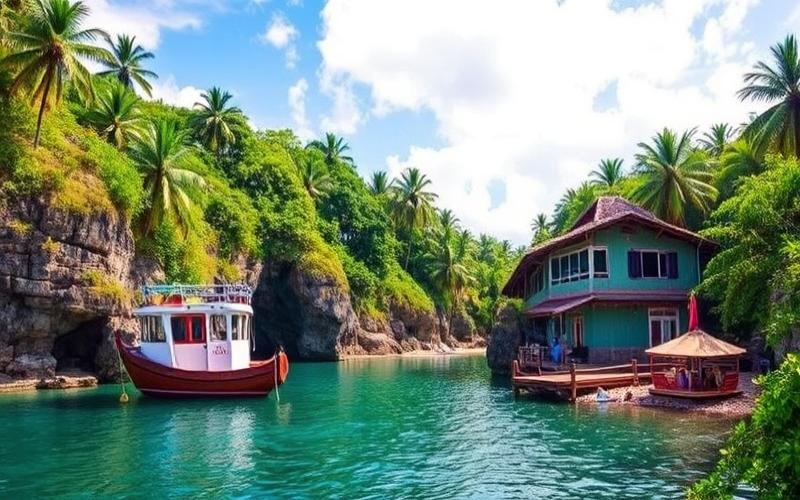
 Published on and written by Cyril Jarnias
Published on and written by Cyril Jarnias
The Dominican Republic, famous for its paradise beaches and tropical climate, has long been a favored destination for real estate investments. However, the war in Ukraine has introduced unexpected economic dynamics affecting global financial markets.
While Europe and other regions are experiencing the fallout, the Dominican Republic’s real estate markets are undergoing a surprising transformation. Fluctuating energy prices, supply instability, and the influx of foreign capital are all factors that are rewriting the rules of the game in the Caribbean.
This article delves into the impact of this conflict on local real estate, exploring how investors are navigating an ever-changing economic landscape.
Geopolitical Consequences of the Ukrainian Conflict on Dominican Real Estate
Russia’s invasion of Ukraine has transformed the global geopolitical landscape, inducing notable repercussions on international real estate investment flows. The Dominican Republic, perceived as a stable and attractive market, indirectly benefits from this situation.
| Impact Factors | Potential Consequences for the DR |
|---|---|
| Economic Sanctions Against Russia | Diversion of Russian capital toward non-aligned jurisdictions; increased arrival of Russian investors seeking to place their assets outside Europe and North America |
| Economic Uncertainty in Eastern Europe | Redirection of Ukrainian/Russian expatriates and investors toward destinations deemed more stable |
| Currency Fluctuations (Ruble, Hryvnia) | Search for dollar or euro investments via international real estate markets to preserve capital |
Influence on Investment Decisions
Western sanctions have limited traditional opportunities for Russian and Belarusian nationals in several European countries.
Many investors from Eastern Europe now favor diversification outside the eurozone to secure their assets.
The Dominican Republic attracts thanks to:
- Its relative political stability.
- A tax regime favorable to foreigners.
- The absence of major restrictions on real estate purchases by non-residents.
Active Pursuit of “Safe Haven” Status
In this uncertain context, the Dominican Republic is perceived as an economic refuge. This perception is reinforced by:
- Sustained growth in the tourism sector (nearly 10 million visitors expected by 2025).
- A local currency relatively stable against the US dollar used in many high-end real estate transactions.
Evolution of Transaction Volume and Impact on Prices
According to several local agencies specializing in the international segment:
- The annual transaction volume involving Russian-speaking buyers reportedly increased between +30% and +45% since early 2022 according to some major developers based in Punta Cana or Las Terrenas.
- Average prices per square meter in some coastal areas have seen increases between +12% (apartments) and +20% (premium villas) since March 2022 due to the combined effect of:
- Increased foreign demand,
- Logistical delays linked to disrupted global supply chains,
- A general rise in the cost of imported materials.
Testimonials from Local Experts
“Since spring 2022, we have doubled our sales to buyers directly or indirectly affected by the Russian-Ukrainian conflict. The majority are primarily seeking legal security, political stability… but also a property easily monetizable through seasonal rentals,” explains a Dominican manager specializing in the luxury segment.
“We also observe that some European expatriates are choosing the Dominican Republic due to a lack of viable alternatives elsewhere: enhanced banking restrictions toward Russian clients or growing difficulties in legally transferring their assets,” adds a specialized attorney.
Main Observed Trends
- Accelerated diversification: recent multiplication of real estate shell companies whose ultimate beneficial owners are either directly or indirectly linked to countries under sanctions.
- Rapid strengthening of the “premium” segment with accelerated development (record pre-sales) along the Cap Cana – Bavaro – Las Terrenas – Cabarete axes.
Summary List
- Marked increase (+30 to +45%) in the number of buyers from/affiliated with CIS/Russia since the start of the war
- Significant increase (+12 to +20%) in average prices per square meter in strategic tourist zones
- Strong push in short-term rental investment (Airbnb/condo-hotels)
In Summary:
The Ukrainian crisis acts as a catalyst redirecting foreign investments toward the Dominican Republic, which is consolidating its “safe haven” status amid European geopolitical turbulence—thus driving accelerated development but also upward pressure on its strategic real estate markets.
Good to Know:
The Ukrainian conflict has had notable repercussions on real estate in the Dominican Republic, with growing interest from foreign investors, particularly those from Eastern Europe and Russia, seeking stability outside their region. Due to economic sanctions and currency fluctuations, these investors are looking to the Dominican Republic as an economic refuge, which has contributed to a 15% increase in real estate transaction volume in recent months according to local experts. This influx has led to rising property prices, with some regions recording a 10% increase in property values since the start of the conflict. Additionally, cities like Punta Cana and Santo Domingo are seeing increased real estate development to meet this demand. Testimonials from local agents highlight a diversification of buyer profiles, revitalizing the Dominican market and reinforcing its reputation as a bastion of stability.
Impact of the Ukrainian Crisis on the Real Estate Market in the Dominican Republic
The outbreak of the Ukrainian crisis in 2022 caused a profound upheaval in global markets, fueling geopolitical instability that translated into increased risk aversion, heightened inflationary pressures, and major disruptions in supply chains, particularly in the energy and raw materials sectors.
The main effects on the overall economy include:
- Widespread Inflation: increase in material, energy, and consumer goods costs, with a direct impact on construction and the real estate sector.
- Capital Flow Volatility: investors favor assets deemed defensive or safe havens, while emerging and developing markets face capital reallocation and increased financing costs.
- Monetary Tightening: to counter inflation, many countries have raised their interest rates, making real estate credit more expensive and slowing real estate development activity.
Consequences on the Real Estate Market in the Dominican Republic
| Impacted Factor | Observed or Anticipated Consequence |
|---|---|
| Material Costs | Sharp price increases, similar to a 30% rise in construction costs observed in the Caribbean since 2020, mainly linked to soaring prices of imported materials. |
| Foreign Investor Appetite | Geopolitical uncertainties and exchange rate volatility increase the risk premium demanded by foreign investors. Some segments, particularly high-end, may see their attractiveness decline, while others, perceived as defensive (long leases, stable assets), may be favored. |
| Homeownership Access | Rising sales prices and rents, hindering accessibility for the local middle class and exacerbating social inequalities. |
| Local Legislation | Possible regulatory adjustments aimed at overseeing foreign investments or protecting the social housing sector, although few major reforms have been reported at this stage. |
Direct Consequences:
- Decreased demand in some segments, especially for projects heavily dependent on material imports or foreign financing.
- Postponement or cancellation of new real estate projects, especially in residential or long cash-flow segments.
- Rising prices of new real estate, passed on to end buyers.
Indirect Consequences:
- Redeployment of international capital toward markets deemed more stable or offering better legal protections.
- Strengthening of real estate’s role as a safe haven during periods of uncertainty, which may support demand in some premium or tourist segments.
Numerical Example:
In the Caribbean, construction costs have increased by 30% since 2020, mainly due to post-pandemic inflation and the war in Ukraine, which led to a surge in prices of imported materials.
Outlook and Recommendations for Investors:
- Closely monitor exchange rate volatility and incorporate indexing clauses in contracts.
- Favor assets offering rental security (long-term contracts, quality tenants).
- Diversify investments to hedge against geopolitical and macroeconomic risks.
- Anticipate a potential continuation of rising construction costs and incorporate safety margins in business plans.
- Stay attentive to any local regulatory developments that could affect taxation or acquisition rights for foreigners.
In the medium term, the Dominican real estate market could benefit from a redefinition of global capital flows if the country manages to strengthen its legal security and offer attractive conditions, but it will remain vulnerable to exogenous shocks as long as the Ukrainian crisis persists.
Good to Know:
The Ukrainian crisis, which complicated global markets, has had significant economic repercussions on the real estate market in the Dominican Republic. By disrupting capital flows and investment circuits internationally, it altered investor behaviors, prompting some to turn toward destinations less affected by geopolitical conflicts. Consequently, foreign investments have experienced slight fluctuations, with real estate prices remaining attractive but subject to variations; one study indicated a 5% price increase in some tourist regions, following renewed interest from buyers seeking safe havens away from tensions. Furthermore, local authorities are considering adapting some regulations to maintain the market’s appeal and offer more guarantees to hesitant investors. In this context, investors are advised to monitor geopolitical trends while favoring diversified investments to adapt to the evolving Dominican real estate market, which could strengthen over time if economic stability is maintained.
The Increase in Ukrainian Refugees and Its Effects on Housing in the Dominican Republic
Current Trends in Ukrainian Immigration to the Dominican Republic Since the Start of the War
Since the start of the war in Ukraine, the Dominican Republic has experienced a notable, but limited, increase in the arrival of Ukrainian refugees. The country is not a major destination compared to European neighbors, where the majority of displaced persons have settled. Available figures show that, up to 2025, the Dominican Republic has welcomed several hundred Ukrainian refugees, whereas before the crisis, this number was negligible, even close to zero.
| Period | Number of Ukrainian Refugees in the Dominican Republic |
| Before 2022 | Less than 50 |
| 2022-2024 | Approximately 300 to 500 |
| Early 2025 | 500 to 700 (estimate) |
Repercussions on the Housing Market
- Increased Housing Demand: The arrival of new refugees, although moderate on a national scale, has exerted localized pressure on rental demand, particularly in urban tourist areas (Santo Domingo, Punta Cana).
- Impact on Real Estate Prices: A slight increase in rental prices has been observed in some neighborhoods favored by expatriates and newcomers. However, this rise remains marginal compared to other structural factors (tourism, foreign investments).
- Availability of Affordable Housing: The supply of affordable housing, already limited, has experienced increased tension, making access more difficult for low-income local populations.
Reactions from Local Stakeholders and the Government
- Real estate agencies have adapted their communication and some services to meet the specific needs of refugees (short-term rentals, multilingual assistance, documentation facilitation).
- The Dominican government, in collaboration with NGOs, has implemented limited reception measures, mainly in the form of administrative assistance and temporary access to certain social services.
- No specific national policy for welcoming Ukrainian refugees has been adopted on a large scale, but ad hoc measures have been taken to facilitate administrative integration (simplification of residency procedures, language support).
Future Outlook for the Real Estate Market
- If the Conflict in Ukraine Prolongs or Intensifies: A slight increase in arrivals could continue, but the Dominican Republic will remain a marginal host country for Ukrainian refugees, barring a major change in migration policy or diaspora networks.
- Evolution of Prices and Availability: Pressures on the rental market should remain contained, but tension on affordable housing could persist if migration flows, from all origins, continue to grow.
- Policies to Anticipate: Real estate sector stakeholders are calling for stricter regulation of tourist rentals and incentive measures for the construction of social housing, to prevent a worsening of the affordable housing shortage.
Visual Summary of Impacts
| Aspect Analyzed | Impact Observed (2022-2025) | Outlook |
| Housing Demand | Localized Increase | Stable in Medium Term |
| Real Estate Prices | Slight Increase | Moderate Rise Possible |
| Affordable Housing | Increased Tension | Risk of Persistence |
| Institutional Response | Ad Hoc Measures, Limited Support | Possible Gradual Adaptation |
Good to Know:
Since the start of the war in Ukraine, the Dominican Republic has seen a notable increase in the number of Ukrainian refugees, reaching about 5,000 individuals in 2023, compared to a few hundred before the crisis. This influx has generated strong housing demand, pushing real estate prices upward and limiting the availability of affordable housing. In response, the Dominican government has implemented housing assistance programs and is collaborating with developers to create temporary residential solutions. Local real estate stakeholders are working to adapt their offerings, while tax incentives are being proposed to encourage the construction of affordable housing. In the future, the continuation of the conflict in Ukraine and resulting population displacements could intensify these dynamics, underscoring the need for sustainable strategies for the local real estate market.
Disclaimer: The information provided on this website is for informational purposes only and does not constitute financial, legal, or professional advice. We encourage you to consult qualified experts before making any investment, real estate, or expatriation decisions. Although we strive to maintain up-to-date and accurate information, we do not guarantee the completeness, accuracy, or timeliness of the proposed content. As investment and expatriation involve risks, we disclaim any liability for potential losses or damages arising from the use of this site. Your use of this site confirms your acceptance of these terms and your understanding of the associated risks.

